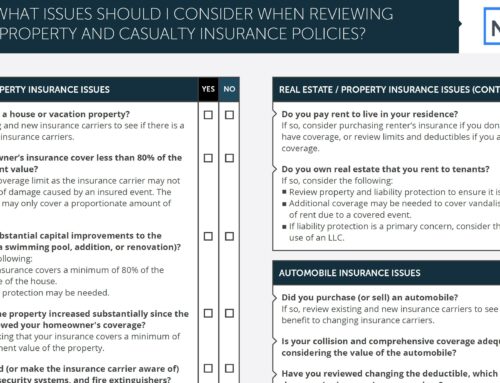Social Security For Couples: Spouse and Survivor Benefits
Planning for retirement involves numerous decisions, and one of the most significant factors is Social Security. Social Security retirement benefits provide inflation-adjusted lifetime payments to recipients. Even if you’re not overly reliant on Social Security because of a pension or other assets, it can still provide an increased standard of living or more asset available to leave to your kids or charity. The claiming decision for single claimants is relatively straightforward. For married couples, the claiming strategies can be particularly complex, with opportunities to optimize benefits both during retirement and in the event of one spouse’s passing.
This is part 2 of our Social Security Series
Part 1: Social Security Basics
Part 2: Social Security for Couples – Spouse and Survivor Benefits
Part 3: Social Security for Couples – Case Studies
In this article, we’ll look at Social Security benefits for married couples. The goal is to help you understand both spousal and survivor benefits and how balancing those two factors can influence your claiming strategy.
Social Security Retirement Benefit Basics
Social Security benefits are calculated based on your earnings history and the age at which you claim benefits. Your Full Retirement Age (FRA) is a key milestone, as it’s the age at which you can claim full benefits. For those born in 1960 or later, FRA is 67. You can claim benefits as early as 62, but this will result in reduced benefits. You benefits will continue to increase beyond FRA to age 70. Claiming at age 70 will give you your maximum benefit so there is no reason to wait to claim beyond 70.
Spousal Retirement Benefits
Spousal benefits are designed to provide a supplementary income to the spouse with a lower or no earnings history. To be eligible, the lower-earning spouse must be at least 62 and the higher-earning spouse must have already claimed benefits. If the spouse is eligible for their own benefit, that will be paid first. The spousal benefit will them be added to make the total benefit up to 50% of the higher earning spouse’s benefit.
Example:
Jack (70) and Jill (67) are planning to claim Social Security. Jack’s benefit at 70 will be $4,500 per month. His benefit at his FRA would have been $4,000. Jill was military spouse who spent many years raising the kids or being under-employed because of the frequent PCSs. Her benefit at FRA is $1,500. She will receive $500 in spousal benefits for a total of $2,000. This is 50% of Jack’s $4,000 benefit at his FRA. Delayed retirement credits DO NOT affect spousal benefits.
If Jill was younger, say 62 and Jack was still 70 and both claimed at the same time. Her benefit would be permanently reduced. Let’s assume her benefit at 62 dropped to $1,100. She’d still get the spousal benefit ($500). It is added to the $1,100 for a total of $1,600.
While there used to be various strategies where a spouse “file and suspend” so the other spouse could claim. This is nearly phased out at this point. Now when you file, you are “deemed” to have filed for all benefits you are entitled to. This significantly limits strategies around spousal benefits.
Survivor Benefits
Survivor benefits are often crucial for a lower-earning surviving spouse and younger children after their partner’s passing. Age, relationship, and the deceased spouse’s work history determine the benefits. There are many factors that affect survivor benefits and who and they receive them. Retirement planning purposes there are 2 main scenarios. If the widow or widower is at or older than FRA, they will get 100% of the deceased payment if it is higher than their own. Survivor Benefits are reduced if the widow or widower is between 60 and FRA and decide to claim. The survivor benefit will be 71-99% of the deceased workers benefit depending on the surviving spouse’s claiming age.
Example:
Let’s use the Jack and Jill example above. If Jack dies at 71, Jill have her payment increased to Jack’s payment of $4,500. Different from spousal benefits, survivor benefits can be based on delayed credits. At FRA or beyond, the surviving spouse will receive the higher of the 2 Social Security benefits.
There are still some strategies available to filing for survivor benefits. You can file a “Restricted Application,” which enables the lower-earning widowed spouse to claim only survivor benefits while letting their own benefits continue to grow. They can then switch to own benefits at 70.
Factors Influencing Claiming Decisions
Deciding when to claim Social Security for couples is a multi-faceted decision. Age, life expectancy, health, and work plans play a role in when you should claim benefits. If you continue to work while receiving benefits and haven’t reached your FRA, benefits might be reduced. It’s also crucial to understand the tax implications of Social Security benefits and how they fit into your overall financial situation. Finally, if you have a significant amount of money in Traditional IRAs, 401Ks, or TSP you plan to convert to Roth accounts, delaying Social Security might give you more available conversion dollars within a given tax bracket.




